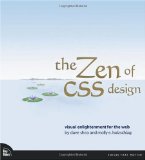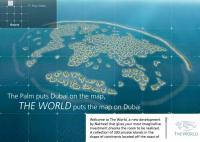After months (and months, and months) on hiatus, GeoURL.org has returned. The service is now run by Ask Bjørn Hansen. It appears that it’s been back up for about a week, and they’re still kicking out some kinks. Once the dust settles, we’ll add it back to Ping-O-Matic.
A quick synopsis of the past few days
Stuff I’ve done since Friday:
- Panicked over some last-minute problems in testing the software we were getting ready to release.
- Visited some friends for a Pampered Chef party.
- Found out that the previously mentioned software problems were only due to issues on the test computer. No real problem here. Yay.
- Bought supplies to refinish some furniture.
- Ate a really, really good homemade meal (my wife rocks). Yum.
- Confirmed that our new baby will be a girl.
- Closed on our new house. (“Sign here. And here. And here. And here. Here. Here, here…”).
- Helped Mary with a school project.
- Woke up this morning to find that Atlanta was dusted with a light blanket of snow.
All in all, I’d say that life is good.
Blacklist Peering Plugin
Mark over at WeblogToolsCollection has come up with another great WordPress plugin for combatting blog comment spam: Blacklist Peering Plugin. My existing greylist and my growing blacklist are doing a pretty good job of keeping the junk out of sight so far. I’m looking forward to adding this plugin to my arsenal. Together, we can tighten the noose even more.
FontLeech: The Free Font Blog
Since I occassionally dabble with graphics and web design, I tend to collect fonts. But I’m just a hobbiest, not a professional designer, so I usually can’t justify purchasing professional font sets. So I bookmark the occassional “free fonts” website. Which is why I’m glad I found out about FontLeech: The Free Font Blog.
Hey, look — it’s powered by WordPress. Awesome. 🙂
Zen of CSS Design
Congrats to Dave Shea, whose CSS Zen Garden web site has demonstrated the benefits of CSS-based design so much better than any verbal explanation could. His efforts, and those of many Garden contributors are now detailed in a book, The Zen of CSS Design.
Update 2005-03-04:
Flog me thrice for neglecting to mention that Molly Holzschlag is the co-author of this book.
The World
If I had a gazillion squared dollars, I’d want to buy a piece of The World. 300 private islands laid out to resemble a world map. Now that’s what I call blingbling.
(via: plasticbag)
Microsoft announces upcoming IE7 release
Despite previous proclaimations that there would be no new version of Internet Explorer until their next generation operating system, codenamed “Longhorn” is released, Microsoft has recently reversed that position and announced that it will be working on Internet Explorer 7, which will be more focused on fixing security problems.
Too little, too late.
WordPress 1.5 “Strayhorn” released
The latest and greatest version of WordPress is out. WordPress 1.5 (the “Strayhorn” release*) has more new features than you can shake a stick at. The release has been pretty quiet so far — no announcement yet on the WordPress Development Blog or on Photomatt’s site. But several people noticed the update on the Downloads page and picked up on it.
I’ve been running this site with the new code for a while now, and it’s been pretty solid. If you’ve been using version 1.2, and haven’t kept up with the development, you’re in for some nice surprises:
- The new theme system makes it easier than ever to radically change the look of your WordPress powered site. And since themes are separate from the core files, you can upgrade your WP installation without overwriting your custom templates. Just be sure that you do your work in a new theme, and don’t directly modify the included “kubrick” or “classic” themes.
- Standalone pages allow you to set up “static” pages of content, like an “about” page. You get to use all the same formatting and plugin functionality of a standard blog post. And you can also use a customized page template in your theme to give these pages a different look from your normal posts.
- Improved comment spam controls help keep nastiness from invading your site. Links in comments use the new
rel="nofollow"standard. In addition to the old “comment moderation” keywords, there are now “blacklist” keywords which cause a comment to be automatically deleted, rather than just being sent to moderation. The system can also automatically detect if comments are submitted from an open proxy (a common spammer technique). - The Plugin API has been expanded immensely. Plugin authors now have access to just about every nook and cranny of the system that you could think of. Plugins can now add themselves to the admin menus and create their own configuration pages. Also there have been tremendous cleanups to the underlying core functions.
- The new “Dashboard” admin page gives you an overview of your site, along with links to the latest news from the world of WordPress.
Did I mention that it’s available for download? What are you waiting for?!?
(* I’m still pushing for a release named after Bix Beiderbecke…)
Google Maps Lat/Long Bookmarklet
I still haven’t had time to dig into Google Maps enough to make my dynamic GPS coordinate thingy. But here’s a quick bookmarklet that can report the coordinates of the center point of the map currently displayed:
Just drag the bookmarklet to your toolbar, then click it when you’re viewing a map.
Google Maps Dissected
Joel Webber has an excellent dissection of how Google Maps works under the hood in his Mapping Google article. Welcome to my blogroll.
Highlights:
- Communication with the backend server is done with a hidden <iframe> and some javascript trickery (not with XMLHttpRequest, as Gmail uses).
- Data arrives from the server in XML and is transformed into HTML by client-side XSLT. This is a bold move, and serves to further demonstrate what can be accomplished in a web browser when you quit obsessing over backwards compatibility. 😉
- Overlays (“pushpin” graphics, drop-shadows, driving routes) are done with a combination of transparent GIFs and PNGs.
- Routes are displayed as overlays, fetched from the server via a separate “polyline” element.
I wish that I had time to dig into this more. I could think up all sorts of fun hacks, if I only had the time (especially if the polyline data can be decoded). One thing I might actually try on my own is a bookmarklet to get the precise lat/long coordinates of map locations. You can grab the center lat/long coords from the inputs in the hidden iframe, along with the “span” values that define the boundaries of the displayed map. A little algebra and some onmouseover magic can get you the current coordinates for the map location under your mouse pointer in the browser’s status bar.
Must…find…time…

